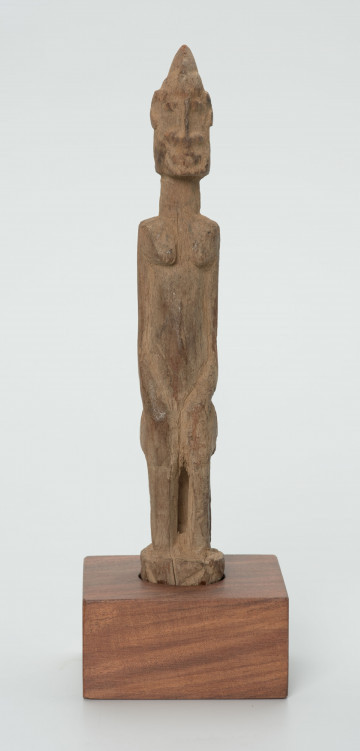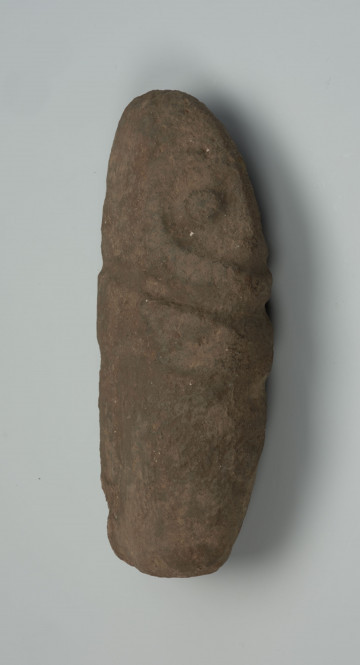
Figurine - ancestor
między 1901 — 1950
National Museum in Szczecin
Part of the collection: Collection of Dogonian art
Given gender and age criteria, we can divide the Dogon society into three distinct categories: the world of men, the world of women and the world of children. Men play the main, dominant role in it and are involved in managing people, directing religion and the economy and politics. Women are focused on three tasks that are also very important, but are described by men as secondary. These are taking care of the husband, the children and the home. The world of children is the world of play, which is a form of learning. Although the boundaries between these worlds are very tight, their competences complement and balance each other, which contributes to the proper functioning of the Dogon society. Men perform numerous other tasks in addition to the religious and political duties mentioned above. The upkeep of the family rests on their shoulders. Before the rainy season, when the fields are prepared for cultivation, they do the hardest work of clearing and loosening the soil. They must also provide a roof over their family's heads, and it is their responsibility to build houses and granaries. They also work in the bush, cutting down trees and hunting. Numerous crafts are the domain of the men. They are weavers, blacksmiths, tailors, their tasks include stripping bark from baobabs, making baskets, cordage, woodworking (woodcarving) and leather. The young men together with their younger siblings guard the herds. They often migrate to other towns in or outside Mali and work odd jobs to raise money for a wife. Men also worked as tourist servants when the Dogon country experienced a tourist boom at the turn of the 20th and 21st centuries. They worked in hotels called campement, they were employed as guides, porters, cooks and interpreters.
Ewa Prądzyńska
Author / creator
Dimensions
cały obiekt: height: 24,5 cm, width: 6 cm
Object type
figure
Creation time / dating
Creation / finding place
Identification number
Location / status

między 1901 — 1950
National Museum in Szczecin

między 1951 — 2000
National Museum in Szczecin

między 1951 — 2000
National Museum in Szczecin
DISCOVER this TOPIC
Museum of King Jan III's Palace at Wilanów
DISCOVER this PATH
Educational path